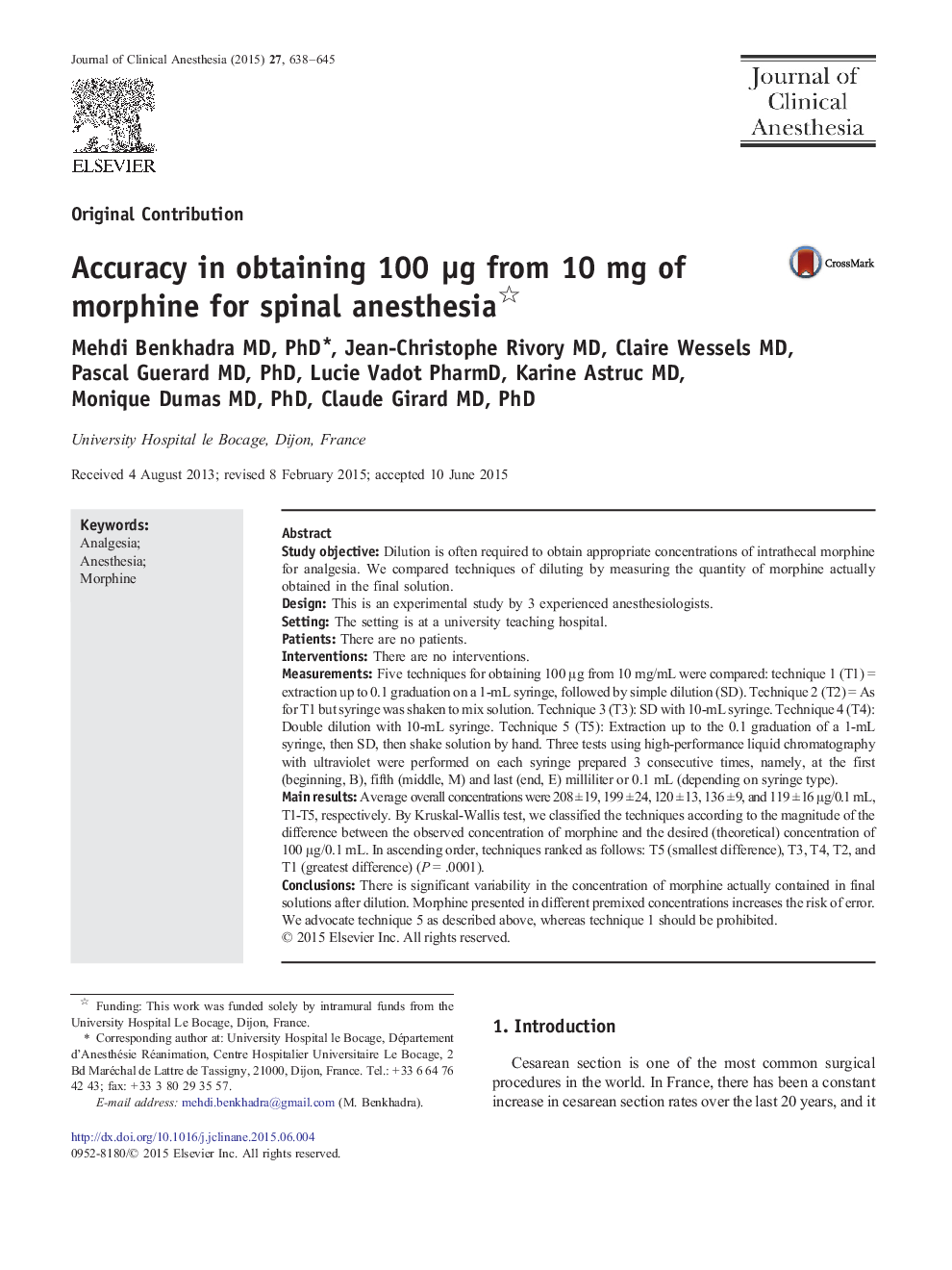| Article ID | Journal | Published Year | Pages | File Type |
|---|---|---|---|---|
| 2762194 | Journal of Clinical Anesthesia | 2015 | 8 Pages |
Study objectiveDilution is often required to obtain appropriate concentrations of intrathecal morphine for analgesia. We compared techniques of diluting by measuring the quantity of morphine actually obtained in the final solution.DesignThis is an experimental study by 3 experienced anesthesiologists.SettingThe setting is at a university teaching hospital.PatientsThere are no patients.InterventionsThere are no interventions.MeasurementsFive techniques for obtaining 100 μg from 10 mg/mL were compared: technique 1 (T1) = extraction up to 0.1 graduation on a 1-mL syringe, followed by simple dilution (SD). Technique 2 (T2) = As for T1 but syringe was shaken to mix solution. Technique 3 (T3): SD with 10-mL syringe. Technique 4 (T4): Double dilution with 10-mL syringe. Technique 5 (T5): Extraction up to the 0.1 graduation of a 1-mL syringe, then SD, then shake solution by hand. Three tests using high-performance liquid chromatography with ultraviolet were performed on each syringe prepared 3 consecutive times, namely, at the first (beginning, B), fifth (middle, M) and last (end, E) milliliter or 0.1 mL (depending on syringe type).Main resultsAverage overall concentrations were 208 ± 19, 199 ± 24, 120 ± 13, 136 ± 9, and 119 ± 16 μg/0.1 mL, T1-T5, respectively. By Kruskal-Wallis test, we classified the techniques according to the magnitude of the difference between the observed concentration of morphine and the desired (theoretical) concentration of 100 μg/0.1 mL. In ascending order, techniques ranked as follows: T5 (smallest difference), T3, T4, T2, and T1 (greatest difference) (P = .0001).ConclusionsThere is significant variability in the concentration of morphine actually contained in final solutions after dilution. Morphine presented in different premixed concentrations increases the risk of error. We advocate technique 5 as described above, whereas technique 1 should be prohibited.
